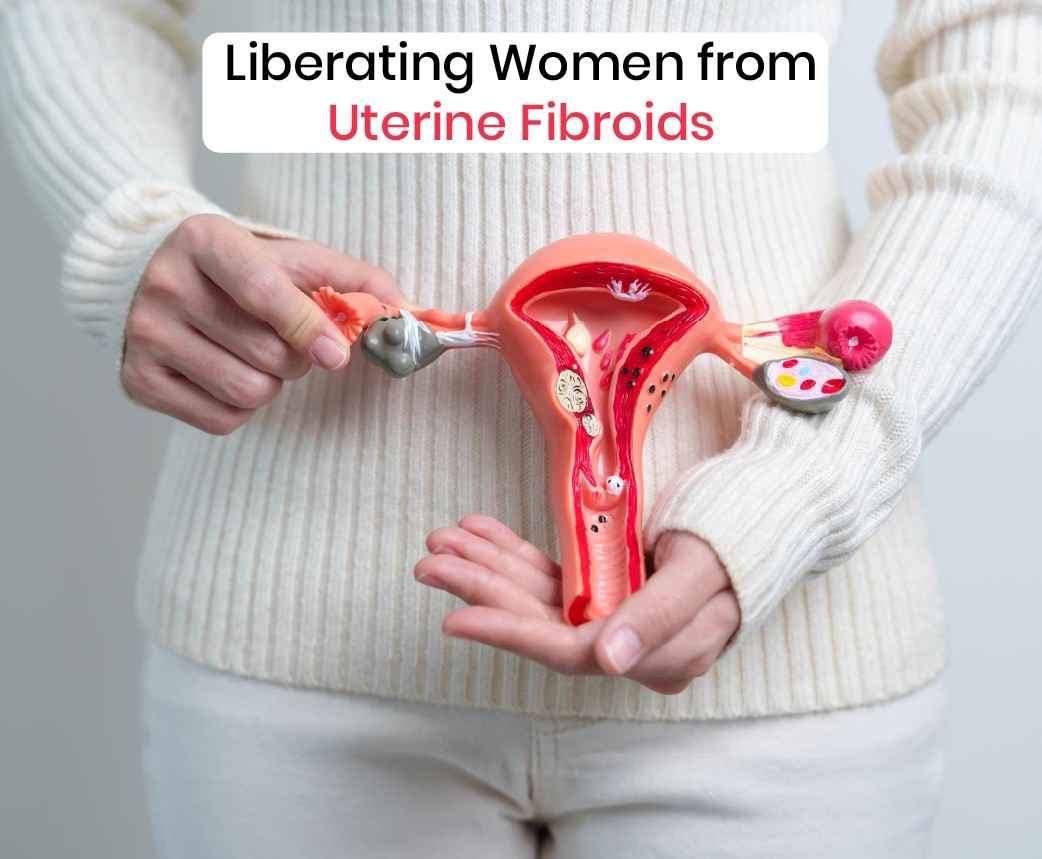Uterine fibroids, those pesky benign tumors that develop in the uterus, can wreak havoc on a woman’s life. But fear not, ladies! There’s a non-surgical route to freedom from these troublemakers. Here through this article we explore how uterine fibroids can be treated without resorting to surgery, and why it’s a game-changer.
Understanding the Early Symptoms:
Imagine your body as a finely tuned instrument, delicately attuned to any deviations from its natural rhythm. When uterine fibroids begin to form, they may initially go unnoticed, manifesting in subtle changes that are easy to dismiss. But paying attention to these early symptoms can be the key to unlocking timely intervention.
One of the first signs to watch out for is changes in your menstrual cycle. Have you noticed your periods becoming unusually heavy or lasting longer than usual? Do you experience pelvic pain or pressure, especially during menstruation? These seemingly minor disturbances could be your body’s way of signaling the presence of uterine fibroids.
First Warning Sign:
Before other symptoms become too unbearable, there’s often a subtle warning sign that shouldn’t be ignored: abnormal menstrual bleeding. Whether it’s unusually heavy periods, prolonged bleeding, or spotting between cycles, any deviation from your normal menstrual pattern warrants attention. Other early symptoms may include frequent urination, constipation, or discomfort during intercourse. While these signs may not immediately raise alarm bells, they shouldn’t be brushed aside. Instead, listen to your body’s whispers and seek medical advice if anything seems amiss.
Ignoring these signs could allow fibroids to grow unchecked, leading to more severe symptoms down the road.
Unleashing the Power of Non-Surgical Treatments:
Picture this: You’re a woman navigating through the labyrinth of life when suddenly, uterine fibroids throw you off course. Traditional treatments often involve invasive surgeries, causing discomfort, downtime, and potential complications. But fear not! Non-surgical treatments offer a beacon of hope.
One such method is uterine fibroid embolization (UFE). This minimally invasive procedure involves blocking the blood vessels that feed the fibroids, causing them to shrink and vanish into oblivion. As a woman who’s undergone UFE, let me tell you, it’s a game-changer! Minimal recovery time, no surgical scars, and best of all, bidding farewell to those pesky fibroids.
Why Surgery Isn't the Holy Grail:
Ah, surgery, the age-old solution to medical woes. Whether it’s a myomectomy (fibroid removal) or hysterectomy (uterus removal), comes with its fair share of risks and side effects.
For starters, surgical procedures entail a longer recovery period, often requiring weeks or even months of downtime. Not to mention the potential for complications such as infection, excessive bleeding, or damage to surrounding organs. And let’s not forget the psychological toll of undergoing major surgery. It’s enough to make any woman second-guess her options.
What Women Truly Fear:
Behind the clinical jargon and medical charts lies a tapestry of women’s fears and concerns when facing uterine fibroids. From the fear of infertility to the dread of chronic pain, the emotional burden can be overwhelming.
For many women, the thought of losing their fertility due to fibroids is a nightmare come to life. The uncertainty of whether they’ll be able to conceive and carry a child weighs heavily on their minds, casting a shadow over their hopes and dreams of motherhood.
Then there’s the physical discomfort that accompanies uterine fibroids – the pelvic pain, heavy menstrual bleeding, and pressure on the bladder and bowel. It’s like living with a constant reminder of your body’s betrayal, disrupting daily life and robbing you of your vitality.
Uterine fibroids may be a formidable foe, but they’re no match for the power of non-surgical treatments. By embracing alternatives like uterine fibroid embolization, women can reclaim control over their bodies without the risks and downtime associated with surgery. So, to all the women out there facing fibroid fears, remember, there’s a light at the end of the tunnel – and it doesn’t require a scalpel to reach it.
Call our expert doctors at Avis Vascular center, and know your possible treatment options including embolization.



